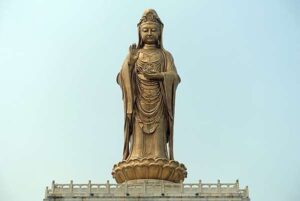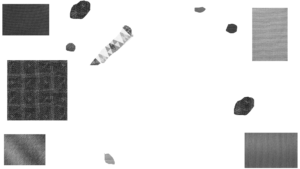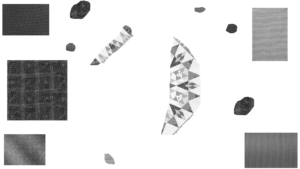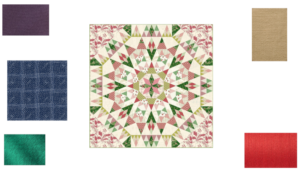Interview flow:
For this interview, I found the tailor who made a suit for me in Shanghai. He is an old master who works in a suit custom shop. The reason that I found him is although making suit or clothes is different from quilting, the connection is still strong and tight. He gave me many clues about quilting or quilting related background majorly in Chinese family and society.
Before I started talking the interview’s question, I claimed the meeting last not longer than 30 minutes, then I introduced my background and what was the interview’s intention. it was a research trying to find the relationship and impact between quilting or quilting related skills with family, friend and community. Below is the summary of the Q&A from the old master.
Q:
- Could you introduce your background or talk me about your tailor career or study experience?
A:
My sewing skill is inherited from my father. I have almost 47 years experience of sewing. I started to work for my father since I was 17 years old.
Q:
2. Why do you do this job? Is that you like?
A:
I do this job because of my father and the environment’s influence. I like this job, which is the reason that I can make clothes 47 years.
Q:
3. What is the impact of the skill to you? Does it help you have more solid connection between you and your surrounding relationship?
A:
I have learned to be patient, and it does change my characteristics. (Then I asked: did you help your neighbourhood making clothes? And did this help you have a good reputation in the community?) I did help my neighbourhood making clothes and they were thankful for what I did.
Q:
4. Was it poor in your community? If it was, did you or people you know do quilting or patchwork?
A:
Yes, my family and the village I lived was poor compared to surrounding cities. In my family, my father usually quilted for us. We collected leftover materials and my father patched them on our old clothes. My mother do farm work instead.
Q:
5. If your family do quilting, who always be the quilters? And is that role important and admired by others?
A:
My father, brother and I all do quilting and sewing. My father make the whole clothes especially Chinese tunic suit during that age.
Q:
6. Is that many male do the job related to sewing, quilting in your hometown? And why?
A:In the area I lived(Taixin, Jiangsu province), it is mainly male who did sewing. If a family member have the skills, he/she will bring other family member to do the job. A family could be a unit of small clothes factory. (Then I asked: how about female in a family? Don’t they do quilting or sewing?) Most female can do basic needle work but most of them would go to assembly line factory. For me, I don’t teach female the skill because of inconvenience.
At the same time, another young female tailor in the store answered: I graduated from a clothes college in Shanghai, most of my schoolmates are female.
Q:
7. Are there any differences between old time and nowadays’ sewing?
A:
Costumer’s standard is much more higher than before.
Q:
8. Will you wish to have more creative in the clothes? Or you still want more classical clothes?
A: It depends on the trend of market. We make costumer liked suit rather than what we liked suit. A good suit depends on its detail and fabric rather than its design.
Q:
9. How do you feel when finish a suit?
A: When i see my customer is satisfied I will be happy. I really enjoy making suit for people.
Q:
10. what you bring for others and other brings to you?
A: Of course, satisfaction and sense of achievement.
Personal summary:
After the interview, I gained a lot of information. I am shocked that in Taixin Jiangsu, China, it is mainly male do the quilting and sewing work, which breaks people’s steyerotype. I believed that in different areas of china, many traditional skills were inherited only by male due to the history reason. However, the answer from the young female tailor in the suit custom shop gave me a hint that the tradition and old social practice is almost gone nowadays in China. Many young women engaged into clothing industry.
Note: The shop is named Wbespoke in Huangpu district, Shanghai, China.
Interview video Link(Chinese Language): https://youtu.be/AkkNZwjc8tM













